Biofeedback Assisted Therapy
Harnessing the Power of the Mind for Mental Wellness
Biofeedback therapy involves using sensors to measure physiological signals from your body—like heart rate, muscle tension, breathing patterns, and skin temperature. During a biofeedback session:
- Real-Time Monitoring: Sensors placed on the skin capture physiological signals, which are then displayed on a screen in real-time. For example, when a person feels stressed or anxious, they might see an increase in heart rate or muscle tension.
- Learning to Self-Regulate: By seeing these changes on the screen, patients learn to recognize how their body responds to stress, anxiety, or other emotions. Over time, they develop techniques to control these responses through relaxation, breathing exercises, and mental focus.
- Building Mental Resilience: As patients practice these techniques, they gain the ability to calm their mind and body in challenging situations, effectively reducing symptoms associated with conditions like anxiety and depression. In simple terms, biofeedback therapy helps people learn to control their own physiological responses to stress and emotional triggers, giving them more control over how they feel and react in daily life.

How Does it Work ?
Biofeedback therapy involves using sensors to measure physiological signals from your body—like heart rate, muscle tension, breathing patterns, and skin temperature.
- During a biofeedback session: Real-Time Monitoring: Sensors placed on the skin capture physiological signals, which are then displayed on a screen in real-time. For example, when a person feels stressed or anxious, they might see an increase in heart rate or muscle tension.
- Learning to Self-Regulate: By seeing these changes on the screen, patients learn to recognize how their body responds to stress, anxiety, or other emotions. Over time, they develop techniques to control these responses through relaxation, breathing exercises, and mental focus.
- Building Mental Resilience: As patients practice these techniques, they gain the ability to calm their mind and body in challenging situations, effectively reducing symptoms associated with conditions like anxiety and depression. In simple terms, biofeedback therapy helps people learn to control their own physiological responses to stress and emotional triggers, giving them more control over how they feel and react in daily life.
Conditions Treated with Biofeedback Therapy
Biofeedback has been recognized as an effective treatment for numerous mental health and behavioral issues, including:
- Anxiety Disorders – Reduces physical symptoms like rapid heart rate, muscle tension, and breathing issues associated with anxiety.
- Depression – Helps alleviate physical tension and stress that often accompany depressive states.
- Attention-Deficit/Hyperactivity Disorder (ADHD)- Improves focus and concentration, reducing hyperactivity and impulsive behaviors.
- Post-Traumatic Stress Disorder (PTSD) – Enables patients to manage physiological symptoms triggered by trauma.
- Chronic Pain – Teaches patients to relax muscle tension and reduce pain perception, benefiting those with fibromyalgia, migraines, and tension headaches.
- Childhood Behavioural Disorders – Emerging evidence supports biofeedback’s efficacy in treating childhood issues like oppositional defiant disorder, ADHD, and anxiety by helping children self-regulate and improve focus.
- Biofeedback is also effective for sleep disorders, substance abuse recovery, anger management, and other stress-related issues, making it a versatile tool in mental health treatment.
Why choose Biofeedback Therapy ?
Biofeedback offers unique advantages when combined with traditional therapies. Here’s why it’s a powerful addition to any treatment plan:
- Accelerates Recovery: Biofeedback gives patients immediate insight into their body’s reactions, speeding up the learning process and allowing them to practice self-regulation faster. This accelerates recovery, especially when paired with therapy techniques like CBT (Cognitive Behavioral Therapy).
- Reduces Need for Medication: By helping patients gain natural control over symptoms, biofeedback often reduces the need for medication, lowering the risk of side effects and dependence.
- Greater Control Over Symptoms: Biofeedback gives patients direct control over symptoms like anxiety, irritability, or tension without relying solely on medication or external interventions.
- Non-Invasive and Safe: Biofeedback is non-invasive, safe, and doesn’t have the potential side effects that medications may bring, making it suitable for a wide range of individuals, including those looking to avoid pharmaceutical treatments.
- Superior to Conventional Measures: While talk therapy (CBT/DBT) addresses thoughts and emotions, biofeedback targets the physiological symptoms that often accompany mental health issues, making it a comprehensive, dual-approach method to support mental wellness.
Myths and Facts
Myths
“ Biofeedback is only for stress management. ”
Fact
While biofeedback is effective for stress, it is also used to treat anxiety, depression, ADHD, PTSD, and chronic pain.
Myths
“ Biofeedback requires high-tech devices. ”
Fact
Biofeedback systems use simple, user-friendly devices that accurately track physiological signals in a non-invasive way.
Myths
“Results are
not long-lasting. ”
Fact
With consistent practice, patients learn to self-regulate their responses, leading to long-term symptom control.
Myths
“Biofeedback is a new, experimental treatment. ”
Fact
Biofeedback has been around for decades and is backed by extensive research showing its effectiveness in mental health treatment.
Myths
“Biofeedback is a ‘one-size-fits-all’ solution. ”
Fact
Biofeedback is tailored to each individual, focusing on specific symptoms or issues they wish to address, making it highly customizable.
Possible Side Effects of Biofeedback Therapy
Biofeedback is generally considered safe and non-invasive, with few, if any, side effects. However, some patients may initially feel uncomfortable observing and managing their physiological responses. Over time, this discomfort fades as they become familiar with the process.
Why Choose Biofeedback Therapy at Thriving Minds?
At Thriving Minds Mental Health Centre, we’re proud to offer biofeedback therapy as a part of our commitment to holistic, evidence-based mental health care. Our experienced therapists provide personalized biofeedback training to help patients master self-regulation techniques, improve mental resilience, and regain control over their mental and emotional well-being. We are one of the first private centers in Dehradun to offer biofeedback, providing our patients with access to a leading treatment option that complements and enhances traditional therapy methods. Take control of your mental health journey. Visit Thriving Minds Mental Health Centre to experience the benefits of biofeedback therapy and see how this advanced treatment can help you live a balanced, stress-free life.
We’ve helped millions feel better.
At Thriving Minds, we understand the importance of mental health and well-being. Thus, we believe in empowering our clients to reach their highest potential. Our team of experienced psychiatrist and psychologists are committed to providing the best care.
Adrika Sharma
Dr. Ankita Priyadarshini has been incredibly supportive and professional in helping me manage my symptoms. Her personalized approach, combining medication and lifestyle guidance, has made a noticeable difference in my mood, focus, and overall well-being. I highly recommend her for compassionate and effective psychiatric care.
Saakshi Maurya
I had a wonderful experience with Dr. Ankita who is an exceptional psychiatrist. She is not only knowledgeable but also takes the time to listen to her patients’ concerns and explains treatments thoroughly. Her expertise and gentle approach made my visit very comfortable.
I highly recommend Dr. Ankita to anyone who is seeking mental health treatment.
Dr. Smruti Pradhan

“Dr Ankita has helped me to live this life what I m living today. She is an amazing psychiatrist who will treat you without you even realising that you have being treated. I never hesitated to share anything with her during my therapy as I was very comfortable with her. Please feel free to consult her for your problem. I will always be thankful to her for whole of my life.”
Thriving Minds mental health Resource
At Thriving Minds, we understand the importance of mental health and well-being. Thus, we believe in empowering our clients to reach their highest potential. Our team of experienced psychiatrist and psychologists are committed to providing the best care.
- All Posts
- Blog
- Featured Blogs

Suicide is a topic that many people are uncomfortable talking about. Society has always had a morbid fascination with suicide. Though still considered taboo, it's not something we like to talk about or think of often. In the event of suicide, it is difficult for friends and family members …..

Have you ever felt like life is just too tough? Indeed, it’s a tough and unforgiving world out there. In today’s world, with the cut-throat competition & limited time for self-care, it is becoming increasingly difficult to maintain mental strength which is an essential characteristic for a person to have….

In this pandemic era, mental health is at the forefront. Earlier mental health would be highlighted only in celebrated cases and otherwise face stigma but with changing times it has been duly accepted as the new normal in the world of illnesses. This current crisis has seen a significant rise in anxiety, …..
ANY
QUESTIONS ?
LOOK HERE
Different forms of treatments are used by psychiatrists as per the patient’s needs. It may be talk therapy or psychosocial intervention or medications. Talk therapy or psychotherapy will usually involve the therapist and the patient talking between themselves. The aim is to limit the symptoms for the patient to feel better. The therapy can continue over some time depending on the patient’s symptoms. It can involve either the individual patient or even a group of people. Talk therapy can be in many forms; such as helping the patient with a behavioral change; overcoming the effects of difficult relationships; etc. Psychiatrists diagnose mental disorders and other emotional troubles, use various types of medications to treat the symptoms. The process of it is not fully known but it may alter the brain’s chemical signalling. This will help control the symptoms. Patients undergoing long-term treatment will need to visit at regular intervals to monitor the changes. Psychiatrists also perform various interventional procedures like ECT, rTMS, tDCS, Ketamine Infusion etc. to alleviate symptoms and hasten recovery.
Mental disorder treatments depend upon the severity of the issue; such as the intensity of the problems faced; the pros and cons associated with a treatment; etc. The treatment is done by making a personalized and careful plan for the patient. This includes a collaboration between the patient and the physician. Most treatments include having psychotherapy sessions; medications; etc. Also; a good support system is paramount to the recovery of the person. Changes in lifestyle; such as daily exercise; adequate sleep; proper balanced diet can help the person recover quickly. The individualized treatment plan will involve all these steps to make a quick recovery. Doctors and therapists help out the person and their families in understanding their metal disorder and the ways to battle it out.
According to scientific studies; psychotherapy relieves the person from distress and helps them in living a better life. Approximately 75% of people who have undergone psychotherapy have felt better. It has been associated with influencing positive changes within the body and has shown significant progress in emotional and mental wellness. Psychotherapy also shows that people undergoing it take fewer sick leaves; experience fewer medical problems and report a satisfaction in their life and work. Today; techniques like brain imaging have shown that psychotherapy induces a change in the brain. This altered brain images are similar to changes that happen as a result of medications. It is important to know that to benefit from psychotherapy; one needs to be honest and insistent upon following their treatment plans. Sometimes; practices such as; journal writing may also be of help.
Telepsychiatry is a convenient option for many to seek easier to access and affordable options. It helps the patients by- Making health care accessible in regions where it is not easily provided. Taking the care facility to the patient’s home virtually. Limiting the needs to visit a doctor over long distance. Timely health care options. Continuous improvement in health care with virtual follow ups. Reducing the need to take leave from work or other services. Removing the obstacles to stigma associated with mental health. Allowing privacy and safety to many. Many people are comfortable in virtual set-ups rather than real time meetings. This will allow them to open up more and feel relaxed. Telepsychiatry has been a major way of seeking help; especially during Covid-19 pandemic.

